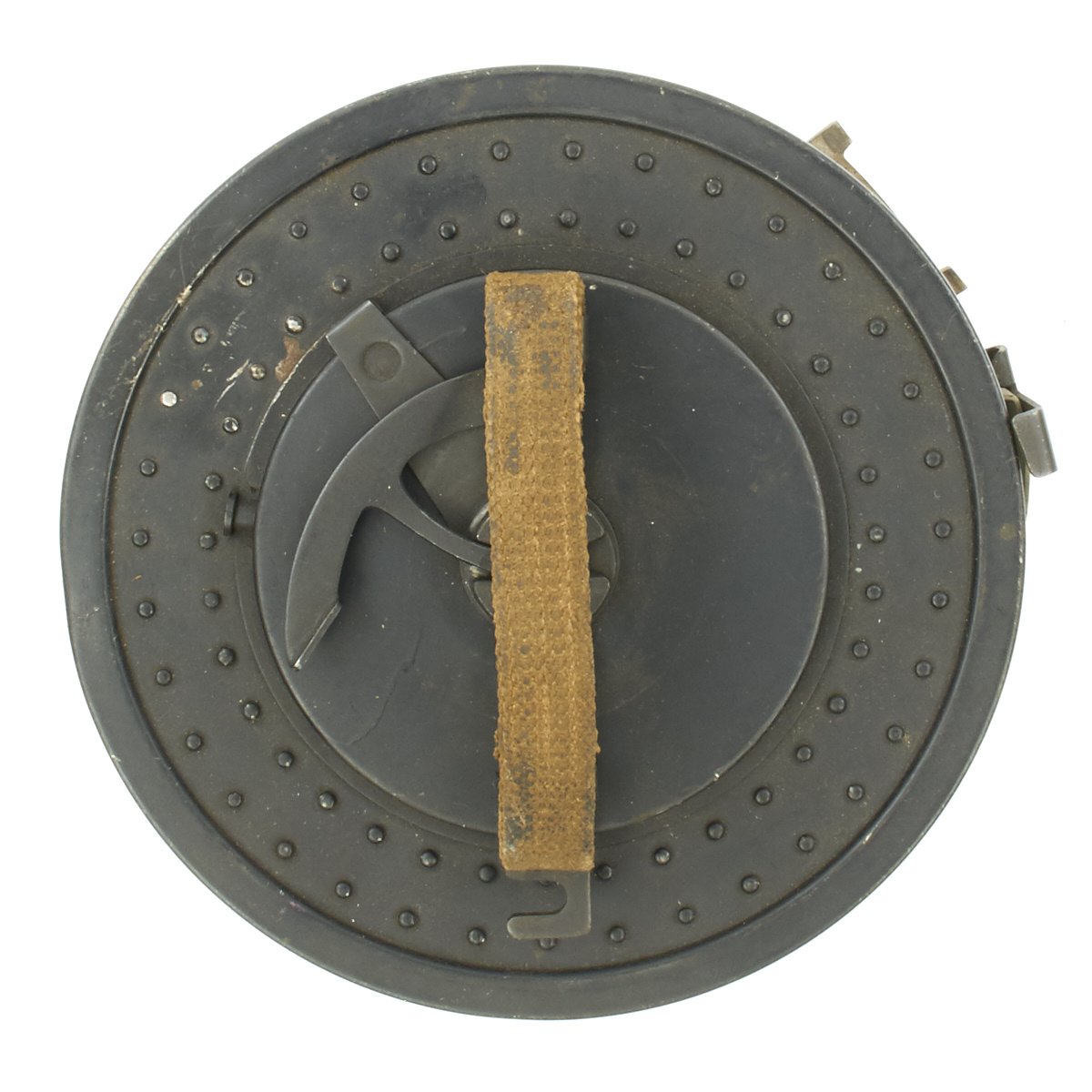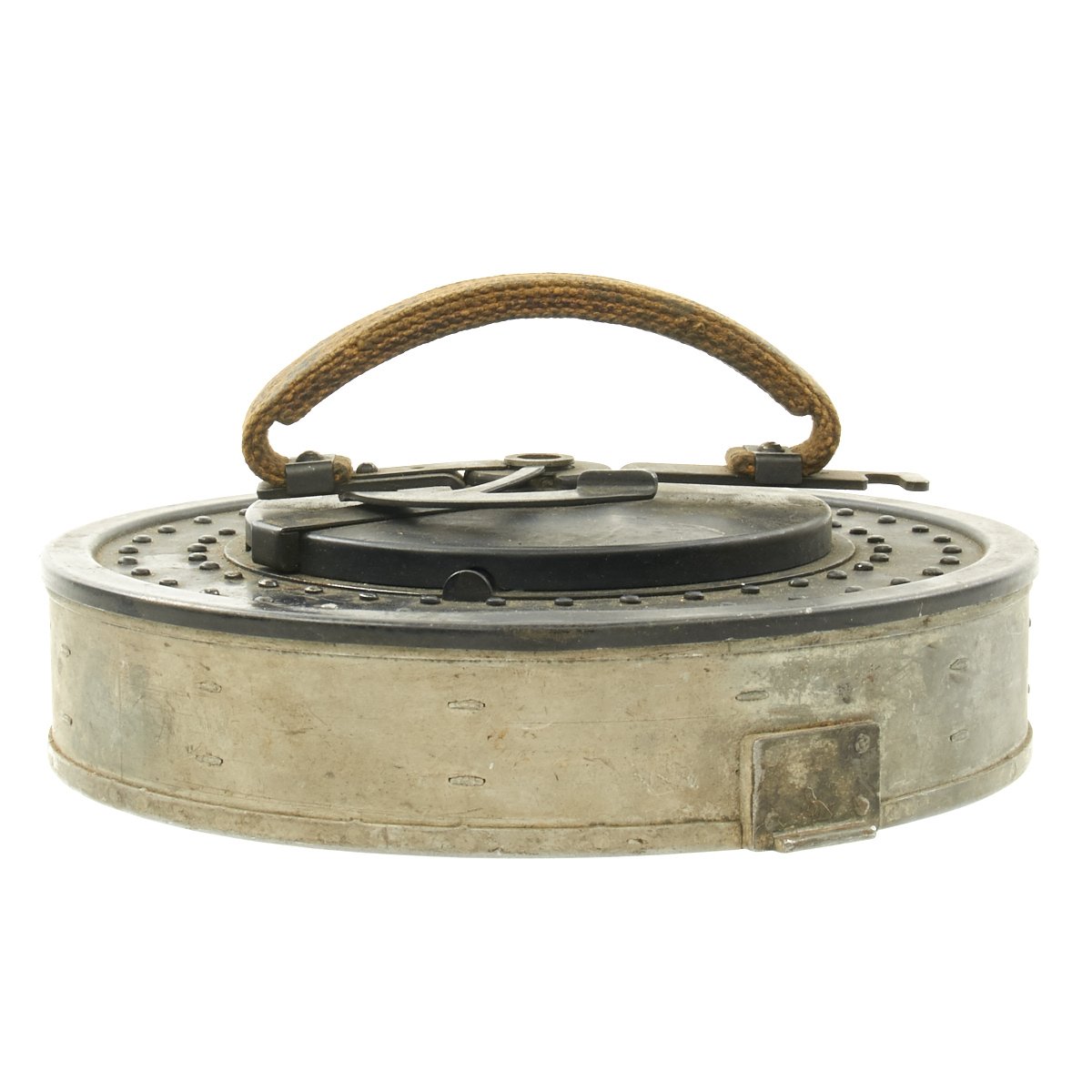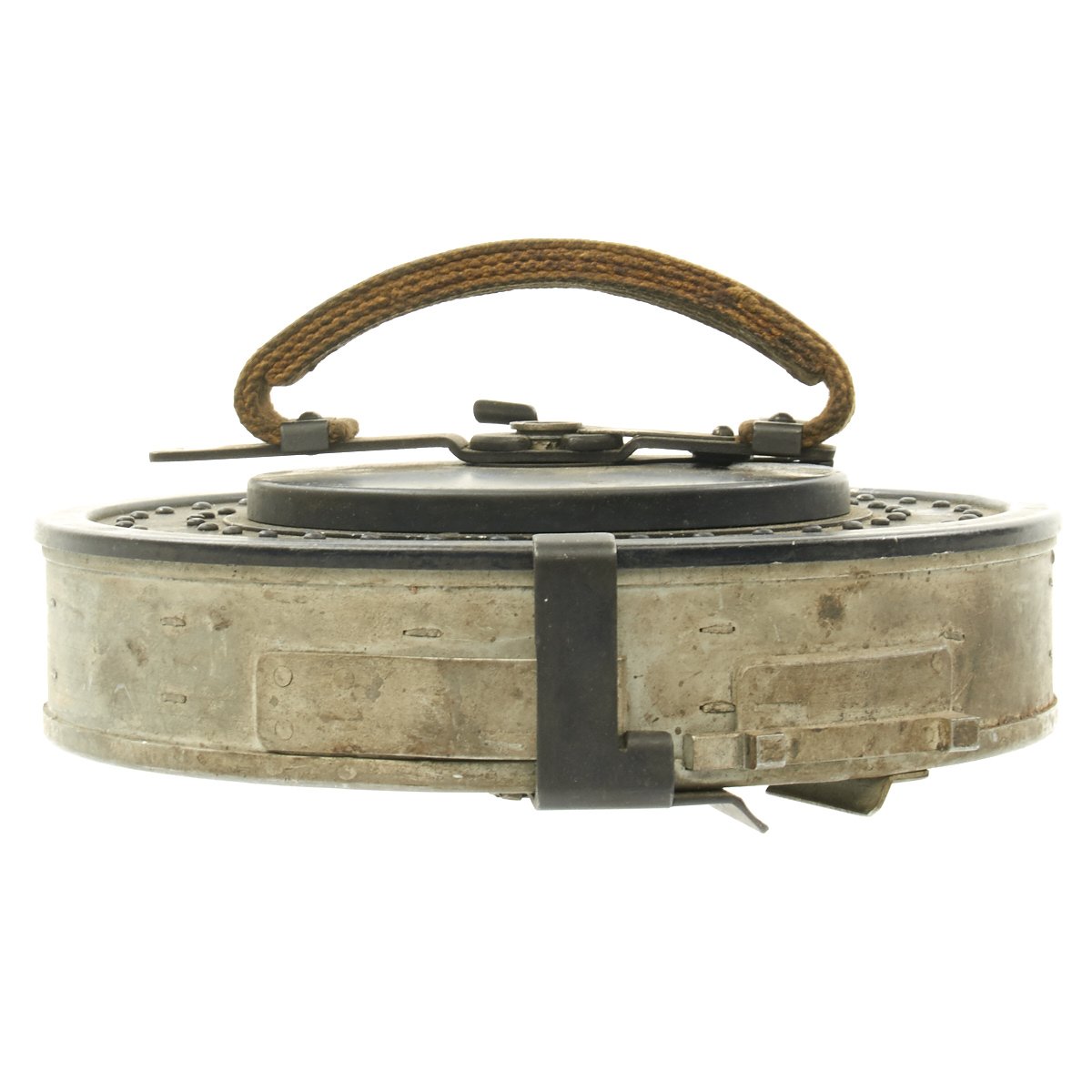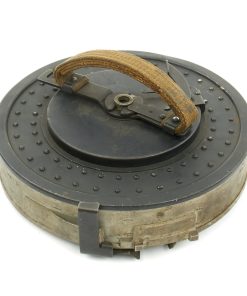Original British WWII .303 Vickers K Machine Gun Drum Magazine Original Items
$ 495,00 $ 148,50
Original Item: Only One Available. This is a rare World War Two issue, circular, one hundred round drum magazine with web handle, for use with the Gas Operated .303 inch Vickers ‘K’ machine gun. It is offered in excellent condition. A near identical example can be found at the Australian War Memorial website at this link.
The Vickers K machine gun, known as the Vickers Gas Operated (Vickers G.O.) in British service, was a rapid-firing machine gun developed and manufactured for use in aircraft by Vickers-Armstrongs. The high rate of fire was needed for the small period of time when the gunner would be able to fire at an attacking aircraft. The weapon was also adopted for land use during World War II.
The Vickers K was fitted to light and medium bombers in RAF service such as the Fairey Battle and Handley Page Hampden. It was also used in gun turrets, such as the dorsal turret in the Bristol Blenheim, the nose turret in the Armstrong Whitworth Whitley and the rear of the cockpit in the Fairey Battle. It was the standard Royal Navy Fleet Air Arm “Telegraphist Air Gunner” machine gun, on British built carrier (Torpedo Strike Reconnaissance) aircraft – the Fairey Swordfish, the Fairey Albacore and the Fairey Barracuda.
As supplies of air-cooled .303 in (7.7 mm) Browning machine guns increased the Vickers G.O. was phased out of use with the RAF. These machine guns were then reallocated from RAF stocks to units of the British and Commonwealth armies. The gun continued in service with the Fleet Air Arm and its last recorded use by the navy was by 812 Squadron RNAS Barracudas in anti piracy patrols off Hong Kong in October 1945.
The Long Range Desert Group was supplied with large numbers of the Vickers G.O. for use on its vehicles. They were used in single or custom built twin mountings. The Special Air Service adopted it for their hit and run tactics, mounting it in pairs on their jeeps. Over the years, it was assumed by some that the latter services took the phased-out VGO because they could obtain no other suitable machine guns but with its high rate of fire and low-friction locking design (which proved resistant to jams from sand), the LRDG and SAS found the G.O. markedly superior to either the .303 in (7.7 mm) water-cooled Vickers or the Bren gun.[1][5] In a similar manner, the Airborne Reconnaissance Squadron of the Reconnaissance Corps mounted the VGO on jeeps when they were attached to the 1st Airborne Division during Operation Market-Garden in September 1944. Royal Marine and Army Commandos used the VGO for infantry support/squad automatic weapon briefly around D-Day. In military terminology, it was known as Gun, Machine, Vickers G.O. .303-inch.
In the Coastal Forces of the Royal Navy, the Vickers K began to replace the Lewis gun on board Motor Torpedo Boats, Motor Launches and other light craft, from 1942 onwards.
Fast Shipping with Professional Packaging
Thanks to our longstanding association with UPS FedEx DHL, and other major international carriers, we are able to provide a range of shipping options. Our warehouse staff is expertly trained and will wrap your products according to our exact and precise specifications. Prior to shipping, your goods will be thoroughly examined and securely secured. We ship to thousands clients each day across multiple countries. This shows how we're dedicated to be the largest retailer on the internet. Warehouses and distribution centres can be located throughout Europe as well as the USA.
Note: Orders with more than one item will be assigned a processing date depending on the item.
Before shipping before shipping, we'll conduct a thorough inspection of the items you have ordered. Today, the majority of orders will be delivered within 48 hours. The delivery time will be between 3-7 days.
Returns
The stock is dynamic and we cannot completely manage it because multiple stakeholders are involved, including our factory and warehouse. So the actual stock may alter at any time. It's possible that you may not receive your order once the order has been made.
Our policy is valid for a period of 30 days. If you don't receive the product within 30 days, we are not able to issue a refund or an exchange.
You can only return an item if it is unused and in the same state as the day you received it. You must have the item in its original packaging.
Related products
Uncategorized
Uncategorized
Uncategorized
Uncategorized
Uncategorized
Uncategorized
Uncategorized
Uncategorized
Uncategorized
Uncategorized
Australian WWII Owen MK1 Machine Carbine SMG Custom Fabricated Replica with Sling Original Items
Uncategorized
Band of Brothers ORIGINAL GERMAN WWII Le. F.H. 18 10.5cm ARTILLERY PIECE Original Items
Uncategorized
Uncategorized
Uncategorized
Uncategorized
Uncategorized
Armored Burgonet Helmet & Polearm from Scottish Castle Leith Hall Circa 1700 Original Items
Uncategorized













































































